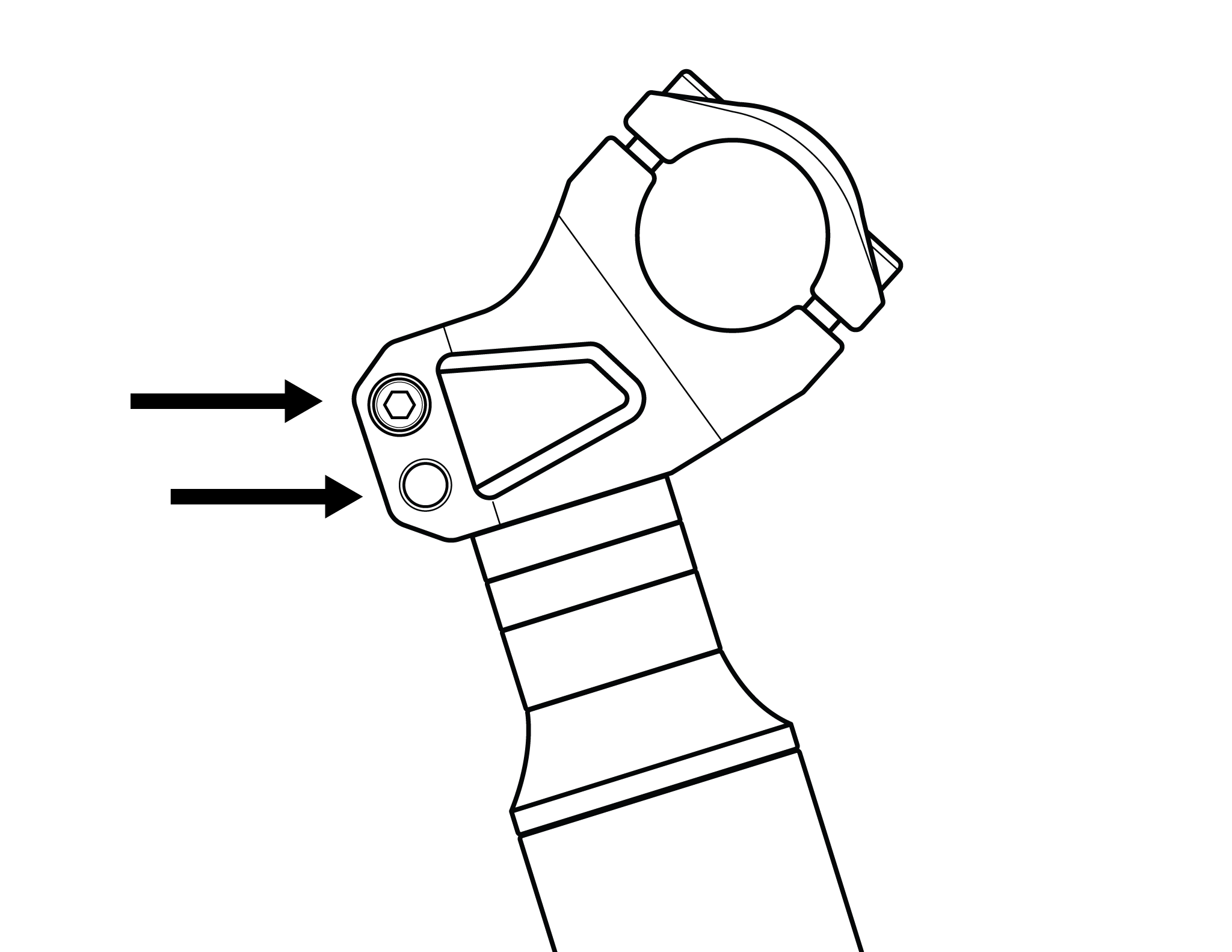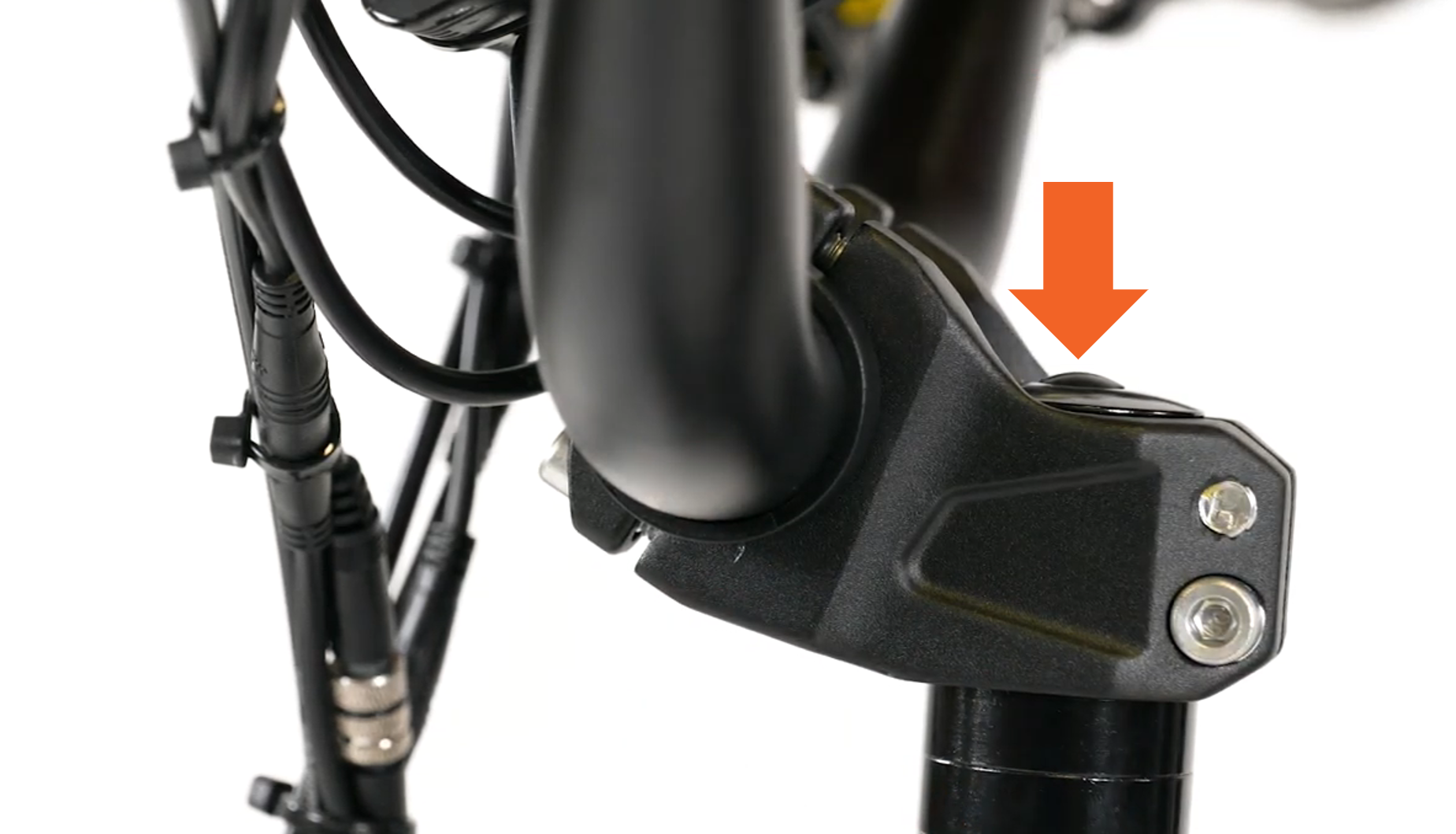RadRhino Headset Adjustment Guide
The headset of your bike is located inside the headtube and allows the fork steering column and front wheel to rotate and turn.
The headset can loosen over time with normal use, so it is important to periodically check the headset tightness and to tighten it properly when necessary. With periodic checks and tightening when needed, you can keep your bike safe and fun to ride.
Follow the steps below to check headset tightness and perform an adjustment on your RadRhino if needed. This guide uses a RadRhino 5, but the steps will be the same for other RadRhino models, including the RadRhino Step-Thru.
If you are not confident in your ability to successfully and safely perform all steps, we recommend having the work performed or checked by a local, certified, and reputable bike mechanic.
Tools Needed:
- 5 mm Allen wrench
- Torque wrench with a 5 mm Allen bit
- Get the bike ready for maintenance. Turn off the bike, remove the battery, and press and hold the MODE button on the LCD display remote to discharge remaining power.
- Check if the headset needs to be adjusted.
- Check if the headset is too loose. Place one hand over the spot where the top of the front fork meets the bike's headtube. At the same time, use your other hand to squeeze the left brake lever, and gently rock the bike front to back.
If you feel a knocking sensation under your hand or hear a "clunking" or rattling sound, the headset is likely too loose. - Check if the headset is too tight. Hold onto the top tube and lift the front wheel off the ground slightly. Without holding the handlebar, carefully tilt the bike slightly to one side and check if the front wheel "flops," or easily and quickly turns to the side.
If the front wheel will not flop to the side, the headset is likely too tight.
- Check if the headset is too loose. Place one hand over the spot where the top of the front fork meets the bike's headtube. At the same time, use your other hand to squeeze the left brake lever, and gently rock the bike front to back.
- Adjust the headset.
- Loosen the stem clamp bolts. Use a 5 mm Allen wrench to loosen (but not remove) the two stem clamp bolts, until the handlebar and stem can move independently of the front wheel.

- Loosen or tighten the headset. Remove the top cap cover and set aside. Use a 5 mm Allen wrench to turn the top cap bolt 1/4 turn, clockwise to tighten or counterclockwise to loosen. Do not overtighten.
Do not overtighten the headset. Overtightening the headset can damage the headset bearings.

- Check the headset tension. Repeat step 2 to check if the headset needs to be adjusted further. Perform another adjustment, if needed. Reinstall the top cap cover once the adjustment is complete.
- Loosen the stem clamp bolts. Use a 5 mm Allen wrench to loosen (but not remove) the two stem clamp bolts, until the handlebar and stem can move independently of the front wheel.
- Align the handlebar.
- Adjust the front wheel so it points directly forward and is in line with the frame. Rotate the handlebar stem independently of the wheel so the handlebar is centered and perpendicular to the wheel direction. To ensure proper alignment, do not use the fender as a reference point for the handlebar alignment.
- Evenly tighten the stem clamp bolts. Once the handlebar is aligned, use a 5 mm Allen wrench to tighten the bolts 1/2 turn starting with the top bolt, and alternating between each bolt to ensure they are tightened evenly. Torque the bolts to 15 Nm.

- Check that the stem is secure. Stand over the front wheel and hold it in place between your legs. Place one hand on each handlebar grip, and try to turn the handlebar from side to side. Push forward with one hand with approximately 20 lb of force, while pulling backwards with the other hand with approximately 20 lb of force. The stem should be tight enough that it does not turn independently of the wheel.
- If the stem turns independently of the wheel, loosen the stem clamp bolts and repeat step 4 to make sure the headset is properly aligned and secure.
Loose or improperly torqued stem hardware can cause loss of control, serious injury, or death. Check that all hardware is tightened securely to recommended torque specifications before each ride.
- Once properly secured, reinstall the battery and test the bike fully before riding.
